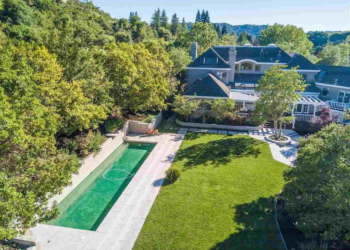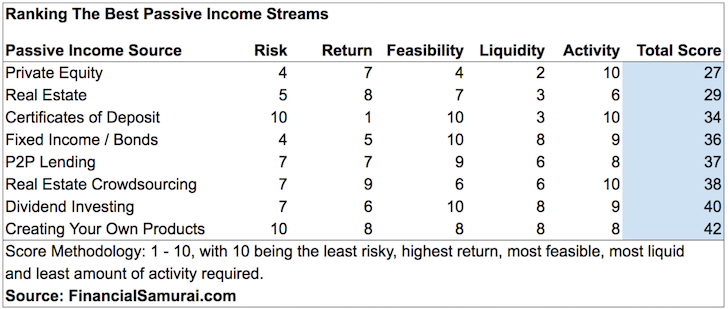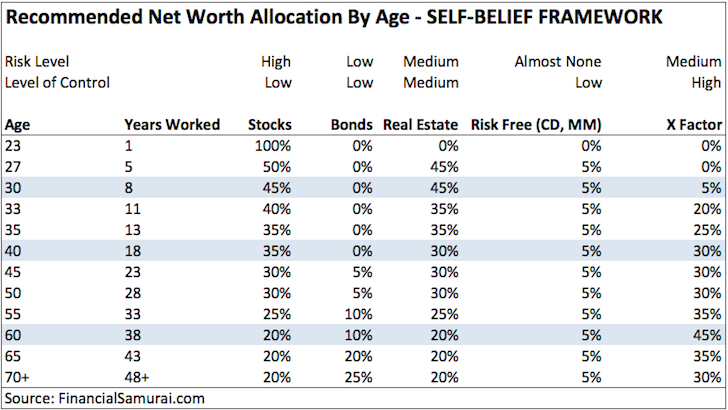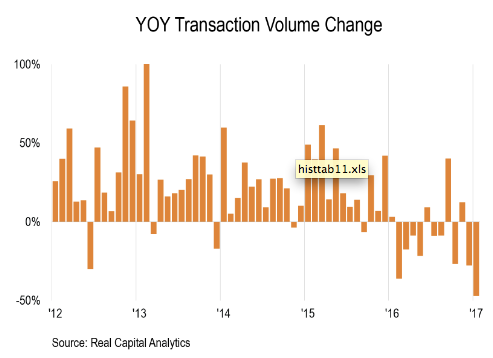
10 years ago, I had the mindset of buying as many investment properties as possible in order to generate enough rental income to never have to work a day job again. I was enamored with using other people’s money to buy a real asset that tended to rise in value over time. Further, I loved receiving a steady rental income stream that was used to pay down the money I borrowed from the bank. To capture 100% of economic benefits with only a 20% down payment felt too good to be true, so I pressed as hard as I could.
Today, I no longer have the same tolerance for dealing with tenants and maintenance issues. Funny how our attitudes change as we age. Don’t believe for one second your attitudes about work, life, and money won’t change either.
After a tremendous run up in property prices, I’ve noticed more people starting to inquire when to sell. As for your primary residence, please try to hold on for as long as possible. If you are a renter, this post will give you a good idea of the seller’s mindset when it’s your turn to finally buy.
Considerations For When To Sell An Investment Property
1) When you have a major life event. There are some key life events that warrant the re-evaluation of owning investment properties: a new family member, a death in the family, a terrible accident that requires extra care, an unwanted layoff, or a job relocation to name a few. Major life events may require more of your time or money. If you’re unable to work, some life events may necessitate that you keep your rental property for semi-passive income.
2)When you have greater sources of passive income. Besides rental income, there’s dividend income, bond income, REIT income, real estate crowdfunding income, P2P income, CD income, and royalty income. It’s important to have a diversified passive income stream because you never know which asset class may get pounded and which asset class will flourish. For your review, I’ve conveniently ranked the best sources of passive income in the chart below.
With an activity score of 6 (10 being the best with the least amount of activity required), rental property is the passive income stream that requires the most amount of activity. This is fine if you compare rental income to day job income (activity score 1). But if you have other sources of passive income that generate just as much or more, then real estate becomes less optimal.
In my case, I never anticipated my online business to grow to multiple times my rental property net income. Just my severance negotiation book sales alone generate more passive income than my $1,000,000 Pacific Heights 2/2 condo rental with zero work required. Online income is far superior to rental income once it gets going due to no maintenance, no property tax, no tenants to deal with, and unlimited scale.
3) When your cap rate is below the risk free rate of return. Think of a cap rate as your net rental yield. Cap rate can be calculated as Net Operating Income / Value Of Property. NOI is calculated by subtracting all expenses from gross rental income. If the cap rate is below what you can earn in a risk-free 10-year Treasury bond doing nothing, you should consider selling because you’re not being adequately compensated for the risk you are taking.
My house’s gross rental income is ~$100,000 a year. Its NOI is roughly $60,000 since I still have a mortgage. My cap rate on my purchase price of $1,523,000 is therefore 3.93%. Not bad, given its ~1.7% higher than the risk free rate of return. However, my cap rate on the current market value is only about 2.3%, a level that’s very close to the 10-year bond yield. If I were to spend $9,000 a year on a property manager, which is what I think is required to find a premium renter, my cap rate falls to only 2.1% based on today’s market price.
Places like San Francisco, Hong Kong, London, and New York City have had low cap rates for decades because investors have banked on principal appreciation. However, as the world becomes more connected due to technology, I forecast cap rates will increase as property prices eventually come to trade based on long term earnings fundamentals.

SF is the worst market to be a landlord in America based on cap rate
4) When you can BURL like a champ. BURL = Buy Utility, Rent Luxury. If you’re able to easily allocate capital towards investment properties that trade at low gross annual rent multiples (high cap rate) to generate tremendous cash flow to pay for a rental property in an amazing location that trades at a high gross annual earnings multiple (low cap rate), then you should go for it. This arbitrage is one of the best lifestyle and money hacks I’ve come up with.
See my post: The Real Estate Investing Rule To Follow

Buy up properties in these market for higher cash flow, and use the cash flow to rent expensive homes in better weather cities
5) When the joy of owning is less than the joy of doing something else more important. The more money you make, the less joy you will experience collecting rental income. It’s just like eating your fifth slice of apple pie isn’t as enjoyable as your first.
Although rental income accounts for roughly 50% of my total passive income, net rental income accounts for less than 10% of my total income. While I’ll always feel proud driving by one of my properties, the concurrent joy I also felt has faded. Instead, I now view the properties as pure income generators, without the nostalgic memories. As soon as you can take emotion out of your investments, you become a better investor.
6) When there is a large supply of property in the pipeline. Real estate price performance is determined largely by the growth in jobs, income, and supply. If you see a large pipeline of condos over the next several years, there will inevitably be downside pricing pressure. The key is to sell before the market gets flooded. Pricing pressure is always worse once the condos / new homes come on market because people usually underestimate their impact.
7) When homeowners are targeted for excessive tax hikes. City and State governments love to make homeowners pay for new projects through higher property taxes instead of increases taxes or fares on patrons. For example, instead of raising train fares in the SF Bay Area, the government decided to make homeowners pay higher property taxes for the next 10 years to fund a $3.5B train bond. I take the train once every six months because it’s hardly on time.
Although a logical conclusion would be that higher property taxes will lead to higher rents, it often takes time to pass the extra cost to the tenant. If there appears to be no end in sight for ever higher property taxes (NJ, IL, CA residents in particular), it may be time to do a 1031 exchange to a more tax friendly state.
I’m currently paying $21,875 a year in property taxes on a home that has an assessed value of $1,890,000 (= 1.18%). Some would say that’s great because the market value is higher, meaning I should really be paying over $30,000 in property taxes. But in my opinion, at $21,875 a year, the property tax amount is already way too high. $21,875 is more than some people pay in rent a year.
In contrast, a house valued at $1,890,000 in Honolulu would only pay an annual property tax bill of $5,670, or roughly 1/4th the amount I pay in San Francisco. Therefore, anybody who wants to geo-arbitrage US property taxes should consider buying a retirement home in Hawaii. Hawaii ranks #50 in terms of property tax percentage by state in America, and it’s ranked #1 in terms of quality of life in my opinion.

NJ and Illinois have the highest property tax rates in the country
8) When real estate commands greater than 50% of your net worth. I don’t recommend anybody have more than 50% of their net worth in one asset class, especially if debt is used to acquire the asset. As you inch towards financial independence, it’s better to have three or four main asset classes that each count for 25% – 33% of your net worth. It’s important to have asset classes that zig when others zag. Or have assets that generate income while others crumble. During the financial crisis, many Americans got wiped out because 80%+ of their net worth was tied to their primary residence.
Here’s my favorite net worth allocation chart by age for those with can-do personalities. You can read my other net worth allocation recommendations here.
9) When you begin to exceed the $250K / $500K tax free profit. The government allows you to pay zero capital gains tax on the first $250K in profits for individuals, and the first $500K in profits for married couples for your primary residence. If you’re hitting these tax-free limits, and you’re still eligible for benefits if you’ve lived in your home for two out of the last five years, then you may want to consider taking the tax-free profits and buying a new place in a cheaper part of the country with potentially more upside.
To defer taxes, you can 1031 exchange your investment property by buying another investment property of greater value within 180 days. You’ll first have to contact a 1031 exchange company to handle the exchange. It’ll cost you about $1,000 – $2,000 for the optionality of doing such a transaction. If you can’t find an investment property you like in 180 days, then you’ll eat the $1,000 – $2,000 setup cost.
10) When you’ve found a better use for the proceeds. If you feel you have a high chance of making a greater return on a different investment with less risk, locking in your gains may be a good idea. For example, after a 60% gain in SF since 2012, I’m thinking it’s a good idea to sell and redeploy the capital in heartland real estate where valuations are much lower. By doing this, my property portfolio will become more diversified versus having three properties in SF and one property in Lake Tahoe.
Even 3% – 4% tax free yielding municipal bonds might appreciate faster than San Francisco real estate if the market flattens or declines.
11) When commission rates become less egregious. The selling commission rate remains stubbornly high at 5% (2.5% to listing agent, 2.5% to sellers agent aka buyer’s agent). At least the rate has come down from 6% ten years ago. It doesn’t make sense to pay the buyer’s agent a 2.5% fee when the agent is trying to get the best deal possible from you for his client!
The irony is that if commission rates were lower, I would have probably sold one of my properties in 2012, right before the massive surge. There’s so much opportunity for companies like Redfin and others to gain market share by undercutting the traditional competition. The problem is, many realtors will steer their clients away from listings that don’t pay them a 2.5% commission.
12) When there are signs of a commercial real estate slowdown. Commercial real estate transactions can be seen as a leading indicator for residential housing growth. After all, companies need to first secure space BEFORE hiring a whole bunch of new people. Transactions and prices began to shows signs of slowing in 2016. Overall office sales fell 7% from 2015, to $140.5 BLN. The slowdown has strengthened in 2017, as commercial property deal volume fell 47% YOY in January, the biggest monthly decline since 2009.
Ride The Inflation Wave Until You Can’t Take It Anymore
Owning real estate is like a war of attrition. The longer you can last, the wealthier you will likely be. Some of you will get lucky with amazing tenants that stay for 10+ years. Others will experience situations that will test your faith in humanity.
At the end of the day, your investment property’s main purpose is to generate cash flow in as painless a fashion as possible. Once the pain of owning becomes greater than the joy of earning, it’s time to sell. Continuously work towards that income stream that provides the highest return with the least amount of work.
Related: Buy Real Estate As Young As You Possibly Can
Readers, anybody sell any of their investment properties and still feel good about it? I’d love to hear your story!
from Financial Samurai http://www.financialsamurai.com/when-to-sell-an-investment-property/





No comments:
Post a Comment